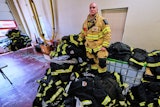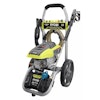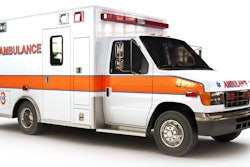Manufacturing workplace environments must have the correct safety procedures in place to ensure everyone is safe at all times — no matter their job. Companies — whether they be a start-up or an established brand - must eliminate hazards and have policies in place that protect workers and ensure that the right rules are being followed.
Basic safety rules are designed to reduce injury when carrying out manufacturing tasks - these should include working guidelines on how to carry out work, how to keep the workplace safe and detailed instructions on what to do in the event of a dangerous situation.
In all manufacturing industries, the same basic rules apply and include:
- Prohibition against drug and alcohol use on site.
- Appropriate safety gear must be worn such as glasses, gloves and hearing protection.
- No loose clothing.
- No jewelry.
- No open toed shoes.
Health and safety rules should also include disciplinary action for those who don’t abide by them - this could include termination or suspension for unsafe behaviour. You should also:
Ensure Workers Are Aware Of Basic Safety Procedures
When it comes to basics in the manufacturing industry - another set of rules should be in place against worker actions. This means that companies should specify safety procedures and highlight certain requirements such as turning equipment on and off, leaving safety guards on and not ignoring safety switches.
Check That Workers Are Trained To Use Specialist Equipment And Have Access To Safety Gear
When operating power tools or equipment, employees must follow equipment manuals in order to prevent an accident or injury. The same goes for those working with ladders or other forms of elevation, they should always have access to the appropriate gear and nobody should ever stand chairs or desks to reach heights.
Label Anything Hazardous
Be sure to also label any potential hazardous chemicals as they can be dangerous and exposure to some of them could cause injury or in worse cases death. If you need to move chemicals to another area, you need to use the correct transportation and should never just carry them around with your hands.
Ensure Modes Of Transport Are Safe
If, for example, you are faced with broken transport equipment such as missing or jammed castor wheels, don’t turn to just any site for replacements. To ensure workers are safe using heavy, moveable equipment you should source your wheels from a specialist company that can tailor your order to your every need when it comes to castors and wheels and help ensure your company offers safer and better transportation.
Keep The Workplace Tidy
Keeping your workplace tidy and organised is another basic requirement. Tools must always be placed back in their assigned location and manuals should be kept in an accessible place at all times — this way employees can use them to reference before using the equipment. A safety officer should also be employed to ensure that all equipment is functional and properly maintained — this individual should be known by everyone too so that they can file a report or problem with any machinery if needed.
Ensure Everyone Understands What To Do In An Emergency
When working in a manufacturing environment, there is a chance that there could be a dangerous situation. In the case of an emergency, employees need to be made fully aware of the procedures that need to be followed, such as where the emergency exits are and making sure these are unlocked at all times. Fire extinguishers must be accessible and checked regularly. Eyewash stations and first aid kits also need to be placed in locations where anyone can have access to them. If there is an accident there must be someone responsible for first aid.
Keep On Top Of Training And First Aid Inspections And Checks
Remember you will need to carry out health and safety checks, risk assessments and first aid inspections regularly. The OSHA can provide you with a checklist for inspections to make sure you are fully aware of all hazards and how to react and prevent them, as well as making sure everything is running smoothly.
Safety management in manufacturing is absolutely essential and without having protocols in place to prevent and evaluate incidents related to machinery, explosives, transit and chemicals, there is a risk of workplace injury. Provide employees with a safe place to work and encourage productivity, happiness and safety all at the same time.
Patrick Vernon is a freelance writer, specializing in business and finance related content. Patrick has gained experience writing for a variety of magazines and websites, researching the latest money saving tips and offering his advice to the public.























